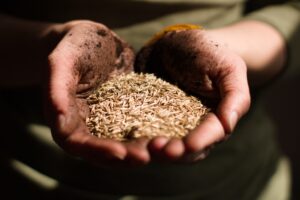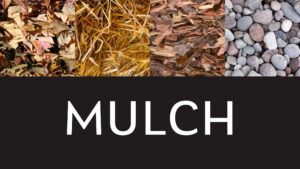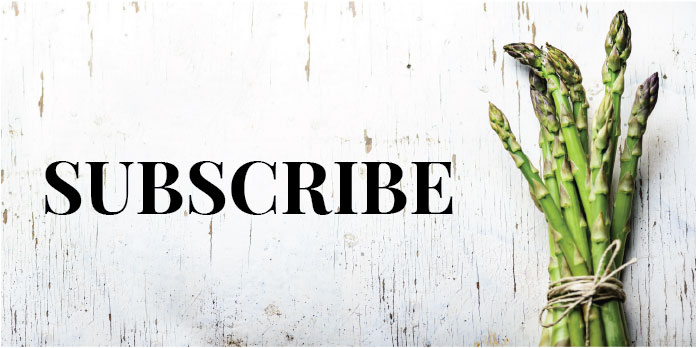In these modern times, it is hard to find a vegetable crisper or shopping basket that is void of broccoli. For so many Australian families broccoli has become a kitchen staple and with a few tips you could be harvesting this amazing vegetable grown from seed in your own patch – saving you pennies and bringing extra nutrients to your cooking.
While typically a cool season vegetable, broccoli is easily grown from seed in all climate zones. Our range of heirloom varieties have shown good resilience to disease, are frost hardy and produce a good sized or good amount of tasty and nutritious florets.
Planting
Seeds can be sown direct or in punnets, however to avoid slug and snail damage and for best germination results, punnets are often the preferred sowing method. Seeds will typically germinate in 7-10 days when placed in a warm and sunny position. Young broccoli seedlings can be on-potted from around the 2-3 week mark with great success if they begin to get too leggy, too crowded or if your simply prefer to plant out more mature plants. To avoid leggy & weak plants ensure the young seedlings receive consistent and maximum sunlight. Remember when on-potting or planting seedlings in their final position, plant the seedlings slightly deeper than the previous soil level as roots will develop along the buried stem. Broccoli loves to be grown in rich, moist and fertile soil and in these conditions will provide large tight and healthy heads.
While Broccoli will thrive in warm weather, avoid maturing the plants throughout the heat of summer as this will cause premature bolting and reduce secondary sprouting. Avoid extra fertiliser that is too high in nitrogen as this can cause excessive leaf growth and also promote legginess. A regular feed of seaweed solution or worm juice will often be all the additional inputs required. Harvest time will vary between varieties but expect to be harvesting your nutritious and tasty broccoli in 70-90 days.
Pests and Diseases
Without a doubt the biggest nemesis of all broccoli plants is the territorial white moth (cabbage moth) caterpillars. For those in cooler climates there will be a reprieve from this pest for several months over winter however, those in warmer climates may not be so lucky. Prevention is the best cure and there are number of ways to keep the hungry caterpillars at bay. If you only have a few plants and have the time, wiping the small white eggs from the underside of leaves works a treat. Fake moths on sticks will also reduce numbers as the moths are territorial and will be less likely lay their eggs where other moths are present. Of all remedies, the best we have found is to simply cover your plants with finely woven insect exclusion netting.
And a friendly wildlife reminder – If you live in a possum conducive environment, we’ve found they love them as much as we do, so some netting might be advised! Slugs love young broccoli plants and will hide under mulches so avoid mulching until your broccoli is well established or place guards around young seedlings. Don’t be tempted to plant your broccoli too close together, they do like a little room to grow and good airflow will ensure mildew and other fungal diseases are kept at bay.
Health and Culinary
‘Versatility’ is one of broccoli’s strong points – able to be eaten raw, steamed, boiled, stir fried or made into a delicious soup. Don’t be fooled into thinking that only the broccoli heads are edible – all parts are delicious and can be included in day to day cooking – Stems peeled and diced make a great addition to stews and curries and leaves can be used as you would Kale. Not only is broccoli very high in fibre and packed with vitamin C, it has good values of vitamins B6, A, potassium and as a non starchy vegetable, has good levels of protein and only 31 calories per cup (91 grams of raw vegetable).
A Little History
In existence since the 6th century and originally a form of wild cabbage broccoli is native to the Mediterranean and parts of Asia, however it was in Italy where it was first truly cultivated to resemble the broccoli we know today. It wasn’t until the 1700’s that it was first introduced to England and the Americas and surprisingly was not a kitchen staple until the 1920’s.
Most Popular Varieties
- Calabrese Organic Broccoli – Choose a nice sunny spot to sow seed directly into the ground and this variety will reward you with large 20cm diameter, deep green heads in just over 60 days.
- Di Cicco Broccoli – An 1890’s Italian variety that is perfect for freezing for a later date. Sow directly or into punnets, this smaller variety grows stunning blueish-green heads of around 10cm then lots of medium sized shoots!
- Green Sprouting Calabrese Broccoli – For a continual supply of broccoli, this variety will grow tender ‘broccolini-type’ sprouts for weeks so you can pick-what-you-need to ensure the freshest of produce in the kitchen.
Fun Facts
The largest head of broccoli on record weighed in at a very impressive 15.87 kg!
President Barack Obama proclaimed broccoli was his favourite food in 2013
China alone grows over 8 million tons per year!
The Italian name for broccoli is ‘broccolo’ meaning ‘flowering top of the cabbage’. This derives from the latin work ‘brachium’ which translates to ‘arm’ or ‘branch’




